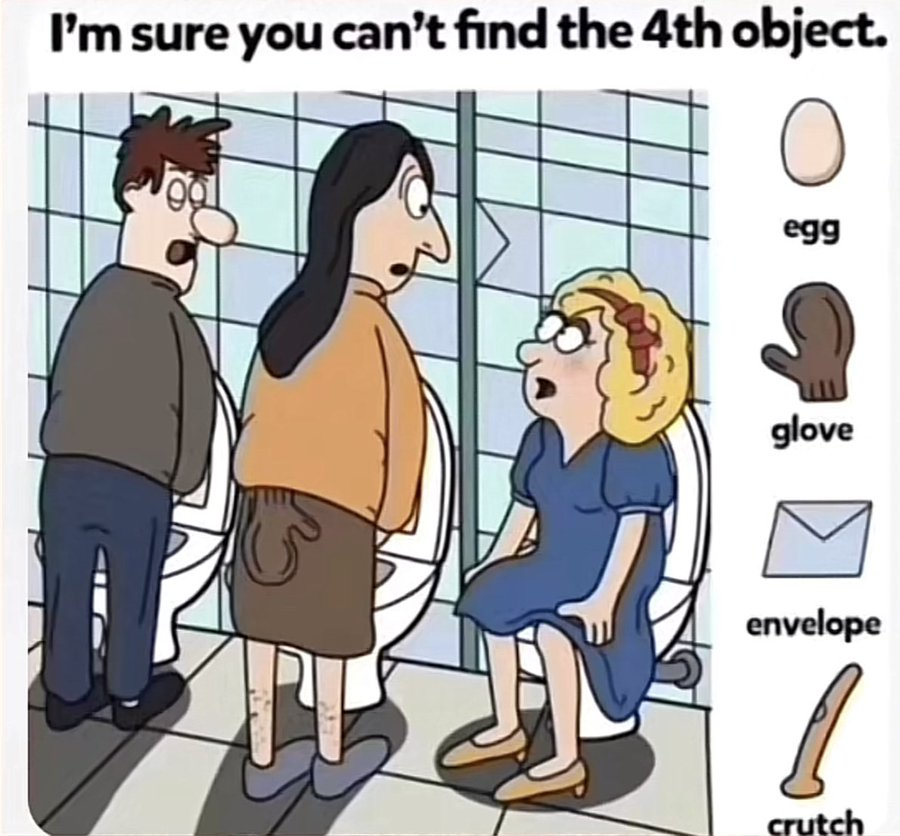The internet is buzzing with a new visual puzzle that’s got people around the world scratching their heads. The challenge seems simple enough: find four hidden objects in a picture. But as participants search for an egg, a glove, an envelope, and a crutch, they hit a roadblock—nobody seems to be able to locate the elusive crutch. So, what’s going on here? Let’s dive into this viral puzzle and explore why it’s leaving so many viewers baffled.

Why We’re Hooked on Visual Puzzles Like This
Visual puzzles like this one capture our attention because they tap into our natural curiosity. In a world where social media constantly bombards us with new information, these challenges offer a refreshing mental exercise. They’re fun, they’re shareable, and they appeal to our desire to prove we can solve something that others can’t. Plus, they create a sense of community—after all, who doesn’t enjoy a friendly competition to see who can find the solution first?
Platforms like TikTok and Instagram thrive on challenges like these. People post videos of their reactions, invite friends to join in, and share their frustrations or triumphs. It’s much like the sensation created by games like Wordle; these puzzles provide a brief escape from our daily routines, inviting us to see the world a bit differently. But what exactly makes this particular puzzle so tricky?
Breaking Down the Puzzle: What to Look For
At first glance, this viral picture looks straightforward. It shows three people in a restroom—two are standing, and one is seated. On the side, there’s a list of items to locate: an egg, a glove, an envelope, and a crutch. But as you start scanning the image, it quickly becomes apparent that these objects aren’t where you might expect them to be. Here’s a breakdown of how to locate the first three items and why the fourth one seems impossible to find.
1. The Egg: A Tough Find in Plain Sight
The egg is a sneaky little object that most people overlook on their first attempt. It’s hidden right on the nose of the person standing on the left. It’s such an odd spot for an egg that it blends in with the background, and you have to look closely to catch it. This tiny detail is easy to miss, making it a great start to a tricky puzzle.
2. The Glove: Camouflaged in the Middle
The glove is a little more difficult to spot. It’s brown and blends perfectly with the skirt of the person standing in the center of the image. Because it matches the color tones of the fabric, it’s nearly invisible until you look directly at it. This clever camouflage is a reminder to look closely and question what you see—sometimes, the object is hiding in plain sight, cleverly integrated into the scene.
3. The Envelope: Hiding in the Background
The envelope is the trickiest of the three found objects. It’s cleverly disguised as part of the wall in the background, aligned perfectly with the bathroom tiles. Its orientation and color make it seem like just another tile, so viewers often overlook it. You have to shift your perception and recognize that what seems to be part of the environment might actually be the object you’re looking for.
The Case of the Missing Crutch: The Puzzle’s Big Twist
So, you’ve found the egg, the glove, and the envelope. But where’s the crutch? Here’s where things get interesting—and frustrating. After combing through every corner of the image, viewers are left puzzled because there’s simply no crutch to be found. Here’s why: the crutch isn’t in the picture at all.
That’s right. The missing crutch is a clever trick designed to keep viewers engaged. This kind of twist is common in visual puzzles and is intended to make participants second-guess themselves, often searching endlessly for an object that doesn’t exist. This hidden element creates a sense of mystery and frustration, but it also hooks viewers, encouraging them to share the puzzle with others to see if they can spot the elusive fourth item.
The Social Media Strategy Behind the Puzzle
Including a missing item like the crutch isn’t just a trick to stump viewers—it’s also a smart tactic for gaining attention on social media. Puzzle creators often use this approach to boost engagement, suggesting viewers “tap the + to see it” or “follow for the answer.” In this case, the missing crutch serves as bait, drawing people in and encouraging them to share the challenge with friends, fueling the puzzle’s viral appeal.
This tactic works especially well on platforms like TikTok, where users might spend minutes searching for the answer, only to realize they’ve been had. It’s all in good fun, of course, but it’s also a reminder that not everything we see on the internet is as it seems. Sometimes, it’s the journey—and the friendly competition—that matters more than finding the actual solution.
Why We Keep Coming Back for More
Even though this puzzle tricks us by including a missing item, it’s a good reminder of why we love these challenges in the first place. They offer a break from our routines, stimulate our problem-solving skills, and spark a sense of playful curiosity. Plus, they’re a great way to connect with others, as we share our attempts and compare notes on where we went wrong (or right).
Visual puzzles like this one tap into something deep within us: the need to explore, to question, and to solve. And even if we don’t find the answer we were looking for, we gain something else—a bit of fun, a sense of accomplishment, and maybe even a lesson in patience and persistence.
Conclusion: Embrace the Challenge and Enjoy the Journey
Did you manage to find the crutch? If not, don’t feel bad. There’s no crutch to be found, and that’s what makes this puzzle such a fun, lighthearted reminder that sometimes the answers aren’t there at all. As you tackle similar challenges in the future, remember that it’s not always about solving the puzzle. It’s about engaging your mind, sharing a laugh, and enjoying the process.
So next time you see a puzzle that seems a bit too tricky, approach it with curiosity and a sense of humor. Who knows what clever tricks the creator has up their sleeve? And in the end, remember to enjoy the journey, because that’s where the real fun lies.



